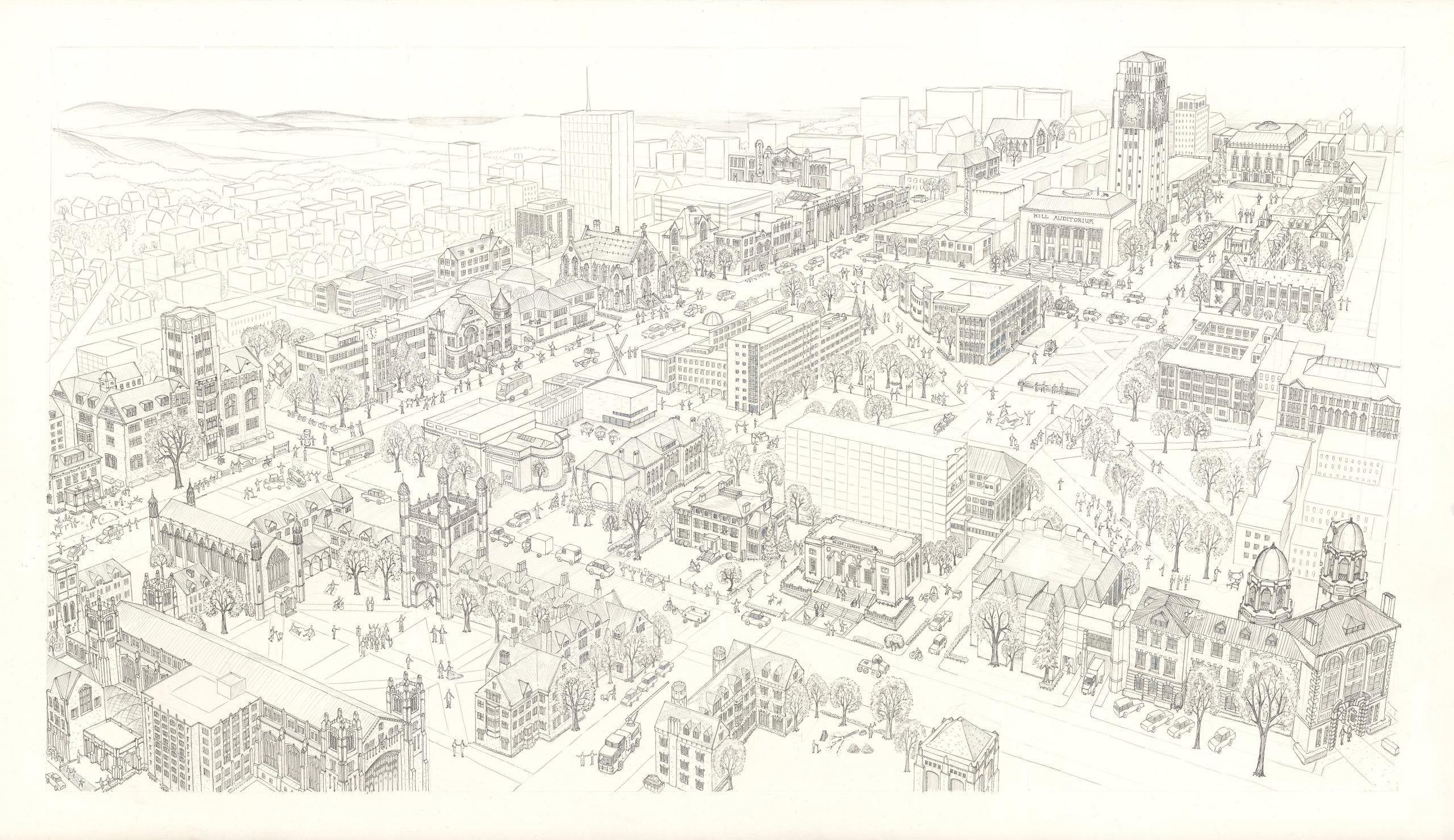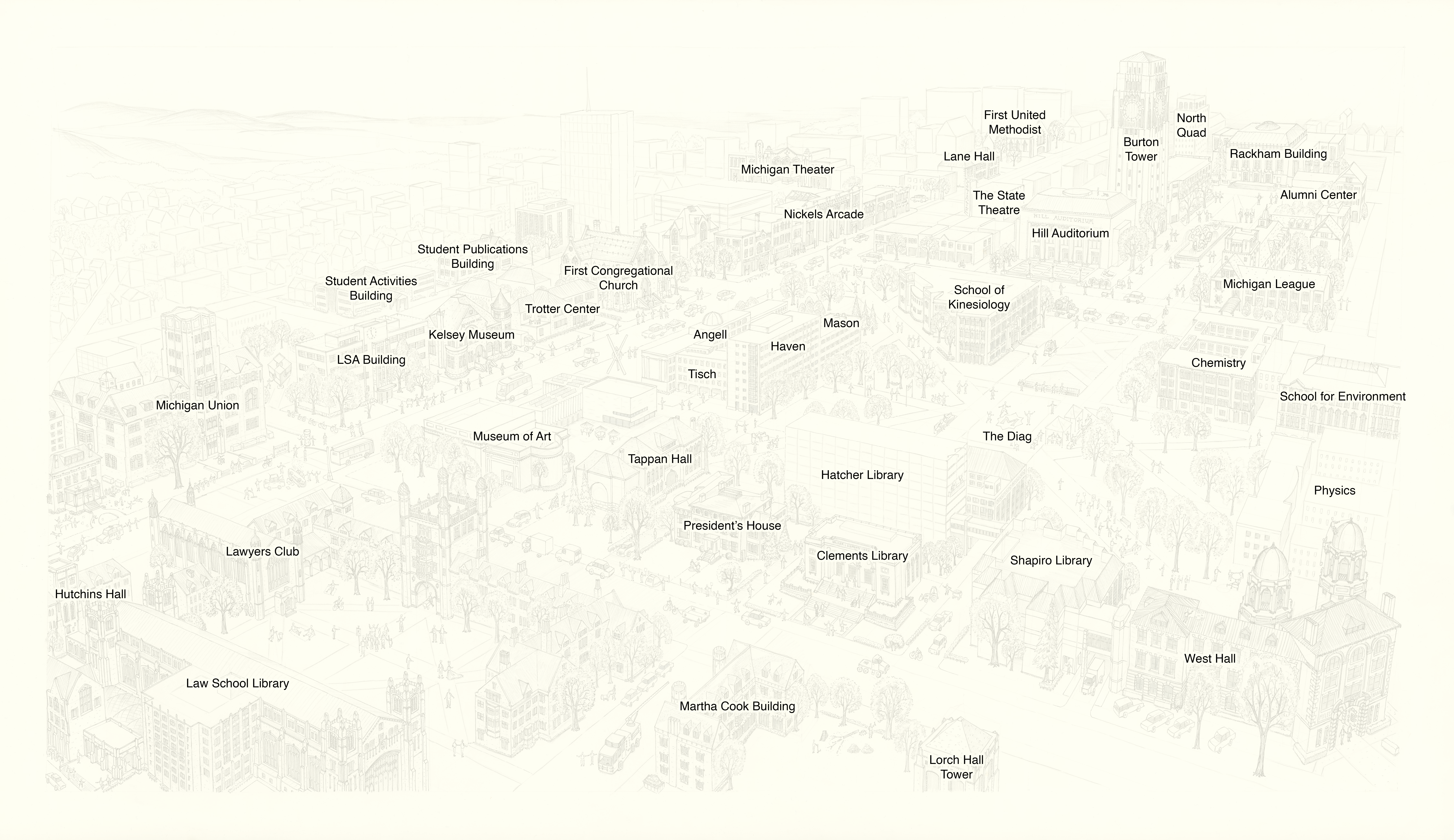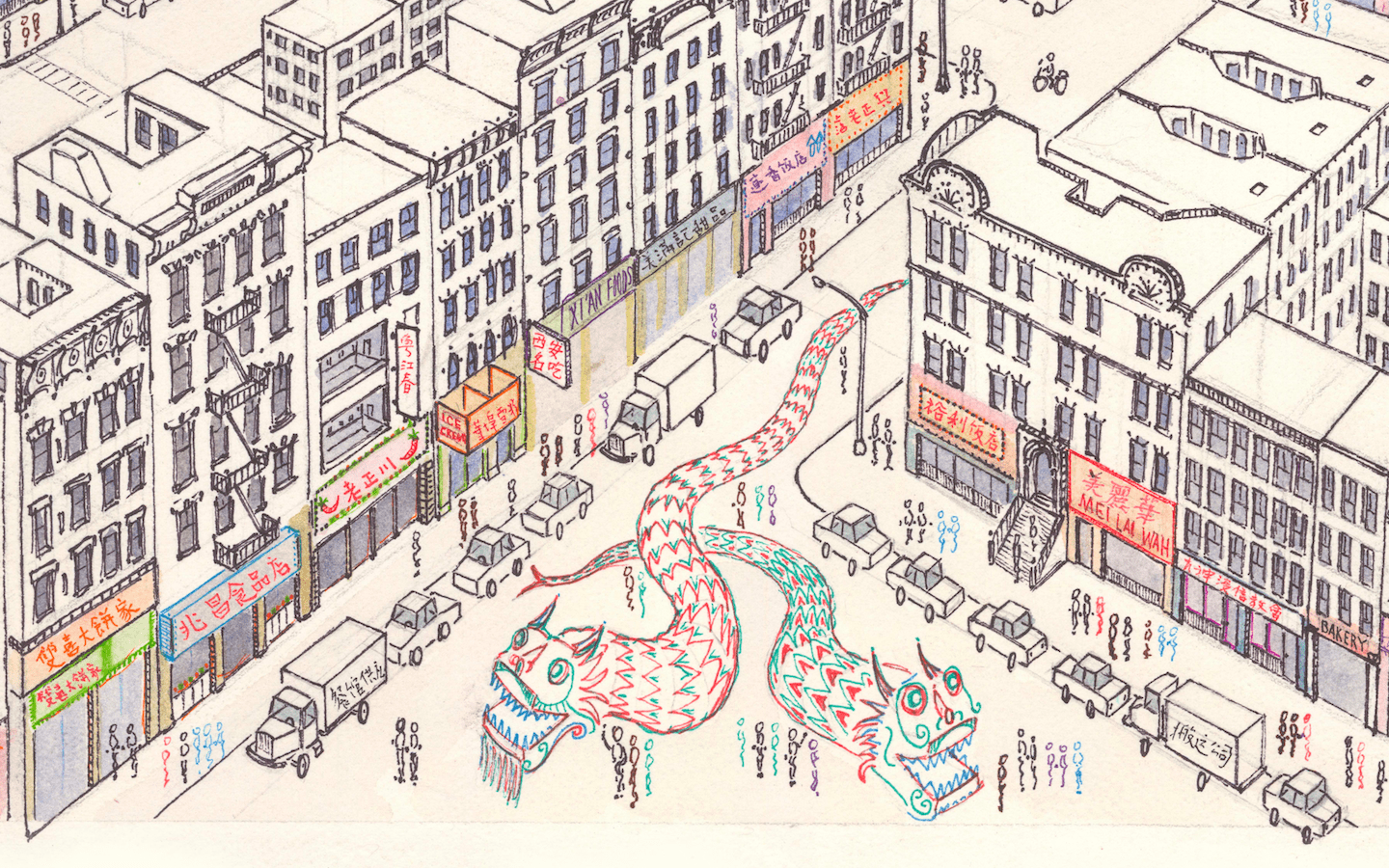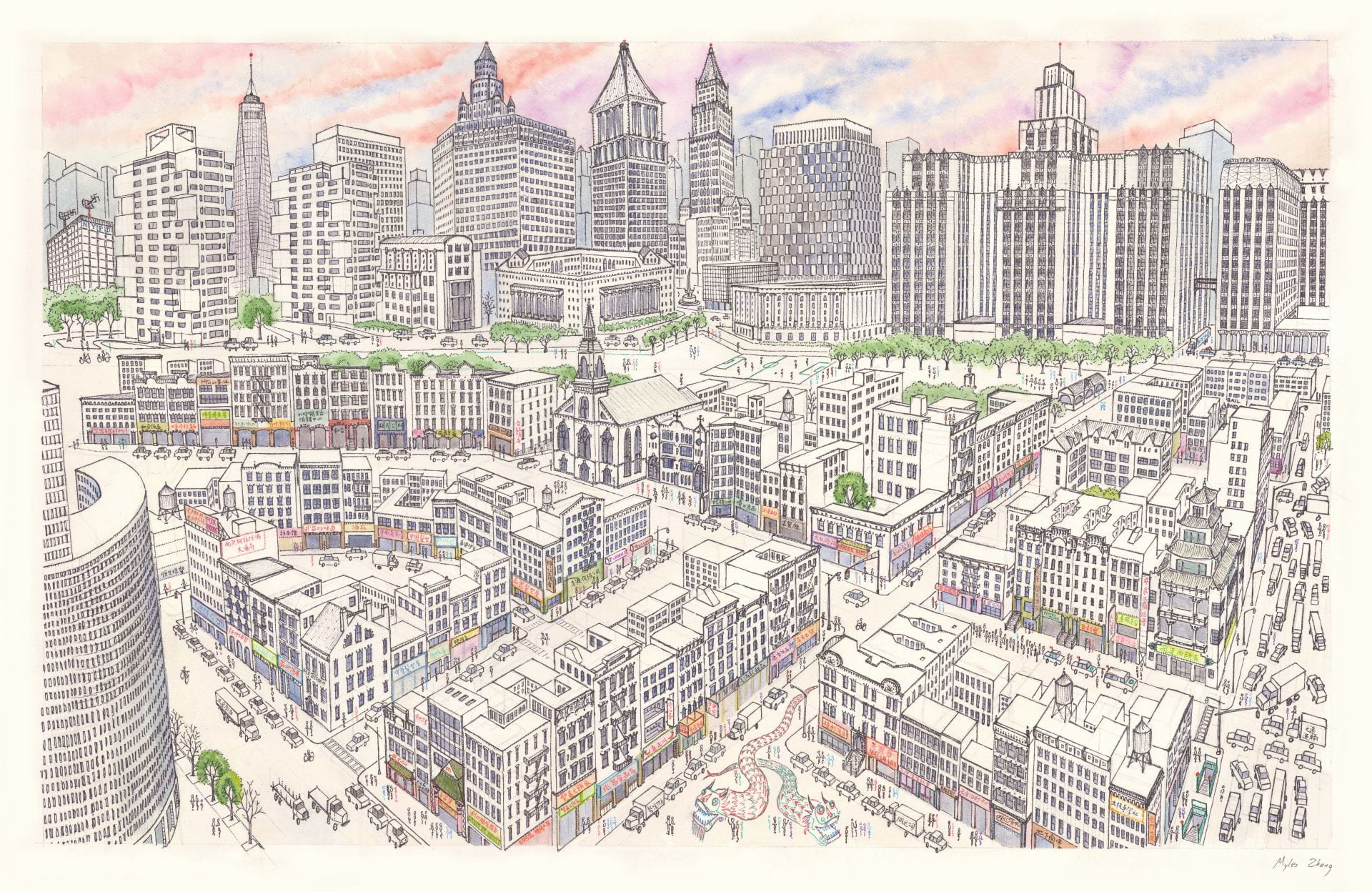.
I made a map of each place where I lived an extended period of time: Newark, New York City, Oxford University, Columbia University, and now the University of Michigan. This map depicts almost every major landmark on the University’s central campus and took about 300 hours to create over the past 18 months. Click the image for full resolution or scroll down for details.
Medium: ink on paper with watercolor wash
Dimensions: 26 by 45 inches (66 by 114 centimeters)
Sources: synthesized from Google Earth, satellite images, maps, and street view
Please contact [email protected] to order artist quality prints of this image. The image can be printed at any size you need: as small as 10 inches to as large as 180 inches wide with no loss in image quality.
View full size image >
Image is provided at resolution suitable for viewing, but not for large-format printing.
Please contact me for the source file.
.
1. Image Annotated with Building Names:
.

Buildings on State Street

President’s House
.
2. Work in Progress:
.

Work in Progress

Work in Progress

Work in Progress

Work in Progress
.
3. Detail Views:
.

Engineering Building Tower

Newberry Hall

Detail of the Diag

Last to Graduate in the Class

Protesters

Three Soldiers

Detail of Pedestrians on Diag

Detail of Windows on History Department

Rackham Building

Michigan Theater

Michigan Theater

Rowdy Fraternity Party

Car Crash at Michigan Union

Angell Hall

Engineering Arch

Engineering Arch

Clements Library

Crowd

People on Lawn

First Congregational Church of Ann Arbor

First Congregational Church of Ann Arbor

First Congregational Church of Ann Arbor

Hill Auditorium

The Cube Sculpture

Law School Reading Room Window

Law School Tower

Cartman in Law School

Law School Window Detail

The Law School

Wedding

Wheelchair

Campus






















